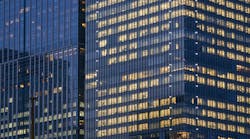No matter how unique or cookie-cutter the building, every project has key drivers and tradeoffs the owner must contend with. Most project drivers are familiar to us: low install cost, low operating costs, space flexibility, and reliability, just to name a few.
The average building owner is acutely aware of their particular drivers. But when it comes to the specifics of lighting—or any building system for that matter—it can be challenging for them to translate their strategic objectives into the details required to ensure system performance matches their expectations.
Meanwhile, a variety of market actors up and down the lighting supply chain are motivated to upsell high-performance systems but are constantly bidding against generic specifications. Forced to compete on lowest cost, the products offered are limited. Projects open themselves to value engineered lighting solutions that provide the cheapest price and lackluster performance.
How do we ensure our customers get the best long-term solution for the building they’re in? When it comes to both new construction and retrofit lighting projects, both sides of the supply chain share a mutual interest: identifying and documenting how project drivers translate to clear performance specification language.
Enter Luminaire Level Lighting Controls, or LLLC. It is a type of networked lighting control (NLC) system which integrates both sensors and load controllers into each fixture, providing unparalleled flexibility, control, and energy savings. Because of its integrated and networked nature, LLLC systems can comprehensively address a myriad of project drivers without forcing compromise. However, these crucial futureproofing systems are unfortunately value engineered out of projects for less desirable solutions.
For example, a building owner might prioritize both space flexibility and low install cost above all other project drivers. Taken on their own, these two project drivers may seem in tension with each other—and for non-networked or less integrated control systems, they would be. While an LLLC system might be the best choice to meet the request, without specific language from the owner or specifier, flexibility will likely get value engineered out of the final bid.
In this scenario, building owners and specifiers could include performance specification language which says:
To accommodate space changes and tenant preferences for low install costs, the controls system should: (A) address all luminaires at the fixture level, (B) be capable of rezoning via an app-based tool, and without rewiring, and (C) offer wireless and surface mount wall controllers.
Performance specification language should be simple and concise, and most importantly, it should always map back to the key project driver it supports. Additionally, distinct attention should be given to ensure that performance specification language that addresses one project driver does not directly conflict with another.
To support the market and promote meaningful lighting performance specifications, BetterBricks has developed a Lighting Performance Specification Language document. It is an easy-to-digest reference tool that maps several of the most common project drivers to LLLC performance features, then provides concise performance specification language which may be adopted by either building owners, their agents, or anyone in the lighting supply chain.
Part sales tool, part educational resource, the Lighting Performance Specification Language document’s real value comes not simply by providing pre-written language, but by providing a consistent and thoughtful methodology which streamlines alignment between customer needs and lighting system capabilities.



